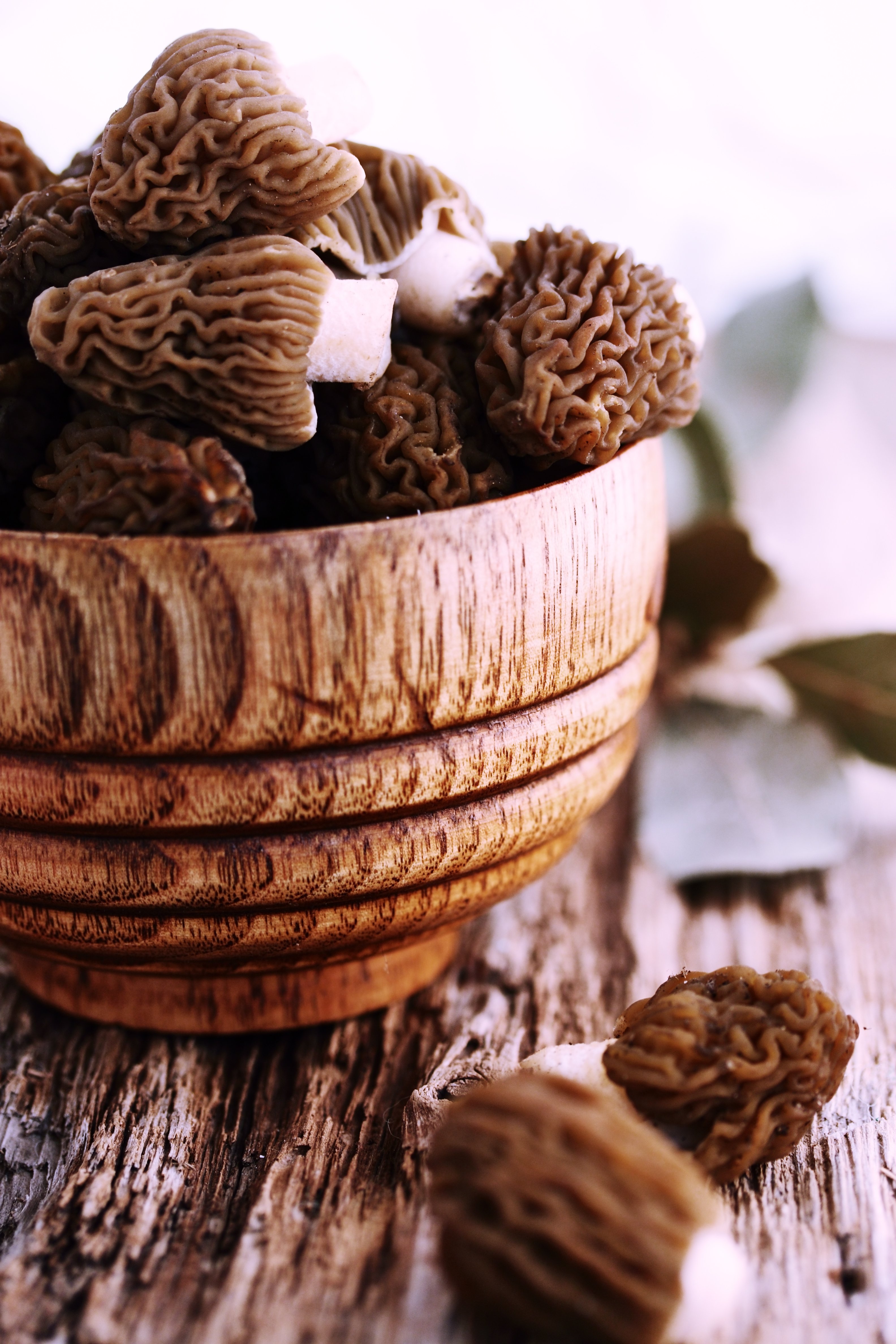If you’ve ever wondered why morel mushrooms come with such a hefty price tag, you’re not alone. These delicious fungi have found their way into the culinary world’s spotlight, but why are they so expensive? Let’s dive in and uncover the secret behind the high cost of morel mushrooms.
You might be surprised to discover that part of the answer lies in their elusive nature. Morel mushrooms cannot be cultivated and are only found in the wild, making them rare and difficult to harvest. This scarcity drives up their price, as foragers spend countless hours hunting for these prized mushrooms.
Another factor contributing to the high cost is the short growing season of morel mushrooms. They typically make their appearance in the spring and early summer, providing a limited window of time for gathering. Because of this short season, the demand for morels is high, and their price reflects this scarcity, much like a rare collector’s item.
So, next time you come across morel mushrooms on a restaurant menu or at the grocery store, you’ll understand why they come with a hefty price tag. Their rarity and limited growing season make them a true delicacy that is well worth the investment for mushroom enthusiasts and culinary adventurers alike. Get ready to savor the unique flavors and textures of these prized fungi!
Have you ever wondered why morel mushrooms come with a hefty price tag? These mushroom delicacies are highly sought after for their unique flavor and limited availability. One reason for their expense is that morels are foraged rather than cultivated, making them harder to find. Additionally, their short harvesting season and delicate nature contribute to the higher cost. The exquisite taste, scarcity, and meticulous harvesting process all make morel mushrooms a luxury ingredient worth the investment.

Why Are Morel Mushrooms So Expensive: Unveiling the Mystery
Morel mushrooms, known for their distinct flavor and unique appearance, are a delicacy highly sought after by food enthusiasts and chefs alike. These elusive fungi command high prices in the market, making them a luxury ingredient. But have you ever wondered why morel mushrooms are so expensive? In this article, we will delve into the factors that contribute to their high price tag, exploring their scarcity, cultivation challenges, and the demand for their exceptional taste. Prepare to uncover the secrets behind the coveted morel mushroom.
The Elusive Morel: A Rare Gem in the Fungal Kingdom
1. Scarcity Rewarded: The Rarity that Drives Up Prices
Morel mushrooms are elusive and often challenging to find. They thrive in specific environments, such as areas recently affected by wildfires, where they play a vital role in nutrient recycling. These unique habitats, combined with specific weather conditions, make their annual appearance unpredictable. Morels also have a relatively short growing season, typically lasting only a few weeks in spring. This scarcity contributes to their high price, with demand far outweighing the limited supply.
2. The Hunt is On: Foraging Challenges and the Quest for Morels
Unlike cultivated mushrooms, morels cannot be easily farmed. They have a symbiotic relationship with certain tree species, such as ash, elm, and apple trees, forming mycorrhizal connections that allow them to extract nutrients from the roots. This intimate partnership makes it difficult to reproduce morels artificially. As a result, most morels found in the market are foraged from the wild, requiring skilled foragers to search in specific habitats and rely on their expertise to spot these hidden treasures. The arduous process of foraging adds to the cost of morels, as it involves time, labor, and knowledge.
3. Culinary Magic: The Distinctive Flavor That Captivates Taste Buds
One of the key reasons why morel mushrooms are so highly valued is their unparalleled flavor profile. The earthy, nutty, and slightly smoky taste of morels adds depth and complexity to dishes, enhancing the overall culinary experience. Chefs and food connoisseurs appreciate the unique combination of flavors that morels bring to the table, elevating both simple and elaborate recipes. The exceptional taste and ability to elevate dishes to new heights contribute to their desirability and the willingness of consumers to pay a premium price.
Soaring Prices: Factors That Influence the Cost of Morel Mushrooms
1. Supply and Demand: Balancing the Delicate Equation
The basic laws of economics come into play when assessing the cost of morel mushrooms. With a limited supply and high demand, prices naturally rise. Chefs and gourmet restaurants are willing to pay a premium for these exquisite fungi to enchant their customers with unique dishes. Additionally, the allure of cooking with rare and coveted ingredients also drives up the demand among home cooks, further influencing the market price.
2. Perfect Storm: Weather Conditions and Their Impact
Morel mushrooms are highly dependent on specific weather conditions for their growth. Adequate rainfall, temperature fluctuations, and soil moisture all play a crucial role in the development of morel fruiting bodies. A combination of dry and wet periods is needed for the mycelium to grow and the mushrooms to emerge. However, uncontrollable weather patterns, such as droughts and extreme temperature changes, can disrupt morel populations, affecting their availability and driving up prices.
3. Transportation and Shelf Life: Maintaining Quality and Freshness
Morel mushrooms are delicate and highly perishable. Their shelf life is relatively short, with a window of only a few days before they start to degrade. The fragile nature of morels necessitates careful handling, proper packaging, and expedited transportation to maintain their quality and freshness. These additional logistical challenges and the need for specialized handling contribute to the overall cost of morel mushrooms in the market.
The Exceptional Appeal: Exploring the World of Morel Mushrooms
1. Cultural Significance: Morels as a Culinary Delight
Morel mushrooms have long been treasured in culinary traditions around the world. They are celebrated for their unique taste and often featured in gourmet recipes, showcasing their versatility and ability to elevate dishes to new heights. From decadent morel risottos to delicate morel cream sauces, these fungi have found a special place in the hearts of food enthusiasts, further fueling their demand and contributing to their high price.
2. Health Benefits: Nutritional Value and Medicinal Properties?
Beyond their delectable taste, morel mushrooms offer potential health benefits. They are a good source of vitamins, minerals, and dietary fiber, making them a nutritious addition to meals. Some studies suggest that morels may also possess antioxidant and anti-inflammatory properties. However, further research is needed to fully understand and unlock the potential medicinal properties of these remarkable mushrooms.
3. Responsible Foraging: Sustainability and Conservation Efforts
Given their scarcity and ecological importance, responsible foraging practices play a vital role in ensuring the continued availability of morel mushrooms. Efforts to promote sustainable foraging, such as educating foragers about the impact of their actions and implementing regulations to protect sensitive habitats, help safeguard these fungal treasures. Responsible practices can contribute to the long-term conservation of morels and the delicate ecosystems they inhabit.
Key Takeaways: Decoding the Enigma of Morel Mushroom Prices
So, why are morel mushrooms so expensive? The answer lies in their rarity, the challenges of foraging, the demand for their distinctive flavor, and the delicate balance between supply and demand. The combination of these factors, coupled with the influence of weather conditions, transportation logistics, and cultural significance, contributes to the high price of morel mushrooms in the market. Whether you indulge in these fungi for their exquisite taste, their potential health benefits, or their cultural significance, the allure of morels continues to captivate food lovers and ensure their reigning status as a luxurious delicacy.
Why Are Morel Mushrooms So Expensive?
- Morel mushrooms are rare and difficult to cultivate, making them scarce in the market.
- Their unique flavor and texture make them highly sought after by chefs and food enthusiasts.
- Morels have a short harvesting season, usually in the spring, which contributes to their limited availability and high prices.
- The labor-intensive process of foraging for morels in the wild adds to their cost, as it requires experienced mushroom hunters.
- Due to their fragile nature, morels have a short shelf life and cannot be stored for long periods, making them even more exclusive and expensive.
Frequently Asked Questions
Looking to understand why morel mushrooms come with such a hefty price tag? Explore the answers to some commonly asked questions below.
1. What makes morel mushrooms so expensive?
Morel mushrooms are considered a delicacy and are highly sought after for their rich flavor and unique texture. There are several factors that contribute to their high cost. Firstly, morels have a short growing season, generally appearing for just a few weeks in the spring. This limited availability drives up the price due to the high demand and low supply.
Additionally, morels have a specific growing requirement that is difficult to replicate. They thrive in certain soil types and in close proximity to specific trees. Cultivating morels requires careful attention to detail and a lot of patience, making the process labor-intensive and time-consuming. As a result, the cost of production adds to the overall price of morels.
2. Do morels have any unique qualities that contribute to their price?
Absolutely! One of the main factors that make morels special is their distinctive taste. They have an earthy and nutty flavor that is difficult to find in other mushrooms. This flavor profile, coupled with their meaty texture, makes morels a prized ingredient in gourmet dishes.
Furthermore, morel mushrooms are not easily cultivated on a large scale. Unlike some other mushrooms, they have not been successfully grown in commercial farms. This means that the majority of morels on the market are foraged from the wild. The labor-intensive process of hunting for morels in specific environments further contributes to their higher price.
3. Can I grow morels at home to save money?
While it is possible to grow morels at home, it can be a challenging and time-consuming project. Morels have specific growing requirements and are notoriously difficult to cultivate. They require a symbiotic relationship with certain tree species and thrive in specific soil conditions.
If you are interested in growing morels, be prepared for a long-term commitment. The process can take several years before you start seeing any harvestable mushrooms. Additionally, creating the optimal environment for morels can be complex and might require specialized knowledge. Therefore, home cultivation may not necessarily result in significant cost savings compared to purchasing them.
4. Are there any alternatives to morel mushrooms that offer a similar flavor?
While morel mushrooms have a distinct flavor, there are other mushrooms that can provide a similar taste profile. Porcini mushrooms, also known as ceps, have a rich and earthy flavor that can be a good substitute for morels. Chanterelle mushrooms, with their fruity and peppery taste, can also be used as an alternative.
It’s worth mentioning that each mushroom variety brings its own unique characteristics to a dish. While these alternatives can provide a similar flavor, they may not exactly replicate the taste of morels. It’s always a good idea to experiment with different mushroom varieties and find the one that best suits your preferences and the dish you’re preparing.
5. Are there any cost-effective ways to enjoy morels?
If you’re looking to experience the unique flavor of morel mushrooms without breaking the bank, consider using dried morels. Dried morels are more affordable than fresh ones and can be rehydrated for use in various recipes. The drying process intensifies their flavor, making them a great option for adding a distinctive taste to your dishes.
Another cost-effective alternative is to explore local farmers’ markets or foraging groups. Sometimes, you can find morels at a more reasonable price when they are sourced locally and sold by smaller producers. This way, you support local businesses while enjoying the delicacy of morels.

Summary
So, why are morel mushrooms so expensive? It turns out that there are a few reasons. Firstly, morels are difficult to cultivate, which means they have to be foraged in the wild. This makes them rare and hard to come by. Additionally, morels have a short growing season and are only available for a few weeks each year. Finally, the unique flavor and texture of morels make them highly sought after by chefs and food enthusiasts, driving up the demand and therefore the price. So, next time you see morel mushrooms on a menu, you’ll know why they come with a hefty price tag.






